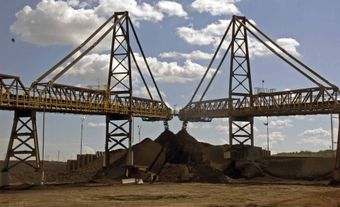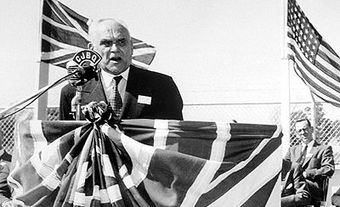The rubber products industry consists of establishments primarily engaged in manufacturing rubber tires, tubing, hose, belting, washers and gaskets, weather stripping, tapes, etc. The 216 (1998) rubber manufacturers in Canada share annual sales of more than $4.7 billion (see Manufacturing in Canada). The industry directly employs 26,300 (1998) people; tens of thousands of additional jobs exist among suppliers and marketers of rubber products and in the transportation and service sectors.

Background
The first European to record rubber in action was Christopher Columbus. While exploring Haiti in 1492, he noticed Indigenous children playing with a ball that bounced. Upon investigation, Columbus found that it was made from the milky-white sap (latex) of a certain type of tree. When exposed to air, the sap darkened, hardened and could be bounced.
No real effort was made to use rubber commercially until the 1760s when experimenters in France found it could be dissolved by turpentine and ether. Seventy years later in Scotland, Charles Macintosh began waterproofing garments. Around the same time the English chemist Joseph Priestley found that the substance would rub out pencil marks, hence the name "rubber." Thomas Hancock, an English coachmaker, discovered that rubber could be shredded and pressed into a soft, pliable block. In 1839 the American inventor Charles Goodyear discovered vulcanization, a process by which the rubber compound is cured at high temperatures, using sulphur.
Although various rubber-yielding trees were discovered growing wild in Central and South America, the best source was the Brazilian rubber tree, Hevea brasiliensis. Seedlings were smuggled from Brazil in 1876 and brought to England. Ultimately plantations were set up in Malaya and other southeast Asian countries, allowing control of the quality of supply of raw natural rubber.
Industry in Canada
Production of tires in Canada began in 1895, although the first Canadian production of rubber articles probably began at Dominion Rubber (later Uniroyal Ltd) in 1854. By the late 1980s the Canadian tire industry was threatened by falling profit margins and foreign competition. In 1998, 13 establishments in Canada shipped $1.89 billion in tires and tubes for vehicles, machinery and implements, employing 9,900 workers and exporting another $1.8 billion worth of goods. The rubber hose and belting industry employed 2,800 people in 1998 and shipped $510 million worth of goods. In addition, 166 other establishments employed 13,600 workers engaged in miscellaneous manufacturing, including battery containers and parts, clothing, vulcanized rubber, mats and matting, rubber, rubber gloves, rubber mats for automobiles, rug underlay, washers and gaskets, weatherstripping and other goods, worth $2.3 billion.
During the Second World War Japanese occupation of the natural-rubber-producing countries of Asia created a critical situation. The rubber industry, working closely with the federal government, pushed forward a crash program to produce synthetic rubber. The program eventually resulted in the formation of the Polymer Corporation (later Polysar Ltd) in Sarnia, Ontario, one of the world's foremost manufacturers of "raw" synthetic rubbers. Today, about two-thirds of the rubber used in Canadian industry is synthetic.
Although automobile tires are its single most important product, rubber has many other uses (see also Automotive Industry). Even in the automotive market, rubber is used for much more than just tires: there are over 200 rubber items in the average car, including wiper blades, engine mounts, door and window weather stripping, fan belts, radiator hose, foot pedals, etc. The industry produces many other rubber products for the agriculture, footwear industry, textile and construction industries. The industry is concerned in developing energy-saving products, e.g., radial passenger tires that wear longer and reduce gas consumption by about 10 per cent over conventional tires. Most of the industry is represented by the Rubber Association of Canada.

 Share on Facebook
Share on Facebook Share on X
Share on X Share by Email
Share by Email Share on Google Classroom
Share on Google Classroom



